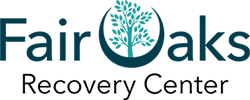A Further Look into the Stages of Recovery and Relapse
 Understanding the importance of relapse prevention following completion of treatment is vital to the success of long-term sobriety.
Understanding the importance of relapse prevention following completion of treatment is vital to the success of long-term sobriety.
According to a 2017 US News & World Report study, deaths from alcohol, drugs, and suicide are projected to increase by 60 percent within the next decade. While treatment techniques continue to improve, 60 to 90 percent of people in recovery will experience a relapse within the first year of sobriety.
This data is not meant to deflate hope, but rather to instill awareness into the necessity of active relapse prevention. Leaving treatment can carry with it a feeling of high achievement—a feeling that nothing can stop you now. While having confidence in your recovery has positive effects, overconfidence can be dangerous. Understanding key components of recovery and relapse can aid in long-term sobriety.
4 Stages of Recovery
The stages of recovery include abstinence, post-acute withdrawal, repair, and growth.
Abstinence
The abstinence stage of recovery generally begins at the time of substance cessation and is marked by relapses that tend to fall in the “just one more time” category. The focus of the abstinence stage is learning how to deal with cravings and working to understand the underlying roots of addiction.
Major tasks of abstinence as outlined by a 2015 study published in the Yale Journal of Biology and Medicine include:
- Accept that you have an addiction
- Practice honesty in life
- Develop coping skills for dealing with cravings
- Become active in self-help groups
- Practice self-care and saying no
- Understand the stages of relapse
- Get rid of friends who are using
- Understand the dangers of cross addiction
- Deal with post-acute withdrawal
- Develop healthy alternatives to using
- See yourself as a non-user
Post-Acute Withdrawal
According to the study, the post-acute withdrawal stage can last for as long as two years depending on the person. The danger during this period is that an individual may experience no symptoms for one to two weeks, and then get hit again. Not prepared for the sudden upswing in symptoms, a person is at high risk for relapse during this time.
Repair
The repair stage usually lasts between two and three years and can be quite challenging. While the abstinence stage helps a person to feel significantly better, a person can fall into a slump during the repair stage. This is the period when a person is facing the overwhelming aftermath of his addiction, such as hardships associated with damaged relationships, finances, employment, and negative labeling by others due to addiction-related stigma.
Growth
While the growth stage is about repairing the past, the growth stage is about moving forward and is considered a lifetime path. During the growth stage, a person may gain better insight into the conditions which predisposed him to addiction.
Clinicians usually mark the start of the growth period about three to five years after a person has stopped using drugs and/or alcohol. Therapy can be beneficial to help rehabilitate negative patterns of thinking caused by trauma or passed down by family members.
The key to understanding how relapse occurs is to first understand that relapse gradually evolves over a period of time. Understanding how relapse evolves can help a person in recovery safeguard herself against becoming complacent.
A study in the US National Library of Medicine segments the evolution of relapse into three stages: emotional relapse, mental relapse, and physical relapse.
Emotional Relapse
During the emotional relapse stage, individuals are not thinking about using drugs and/or alcohol because they are too close to the last relapse or don’t want to repeat past mistakes. The danger of this stage is the presence of denial.
Signs of emotional relapse include:
- Stifling emotions
- Isolating yourself from others
- Not going to meetings
- Going to meetings, but not sharing what is happening in your life
- Focusing on others and developing a victim mentality
- Poor eating and sleeping habits
All of these emotional relapse symptoms are associated with general self-care. Once self-care begins to disintegrate, a person may begin to feel restless and uncomfortable in her own skin. She starts to crave a way to escape. This discomfort presents the transition from emotional to mental relapse.
Mental Relapse
It’s helpful to think of mental relapse as a continuous war inside a person’s mind. On one side of that war is the urge to use. The other side is a person terrified to go back to using. As mental relapse develops, the resistance to use diminishes while the urge for relief strengthens.
Signs of mental relapse include:
- Craving for drugs or alcohol
- Thinking about people, places, and things associated with past use
- Minimizing consequences of past use or glamorizing past use
- Bargaining
- Lying
- Thinking of schemes to better control using
- Looking for relapse opportunities
- Calling an old friend associated with drug/alcohol use
Physical Relapse
Physical relapse, finally, refers to the moment that the individual uses the substance.
Relapse Can Be Disguised by Substitute Addictions
A relapse is defined as a person returning to uncontrollable use of drugs or alcohol. However, addiction relapse can return disguised as something else. For instance, imagine a person who quits using meth, completes treatment, and then decides to work on improving physical health.
Nothing seems wrong with that, right? However, the problem arises when the relationship to exercise takes on an unhealthy tone. In the beginning, it’s just a morning jog. But ever so slowly, the morning jog becomes an obsession. Three miles becomes five. Four days a week becomes seven. And soon, everything is pushed aside to make way for more running.
Moderation Is Vital
Moderation is the key to a healthy lifestyle. Stay on track by remembering the principles of preventing relapse as defined by the NIDA.
- Change your life. Create a life you want to live.
- Be completely honest. External honesty leads to internal honesty.
- Ask for help. Relapse is part of the disease. Rather than hiding from the situation, allow yourself to reach out for support.
- Practice self-care. Self-care is essential. This could include yoga, meditation, therapeutic writing, daily walks, etc.
- Don’t bend the rules. Nothing good happens after midnight! Remember the hard work you’ve invested in your recovery.

For more information about drug and alcohol treatment in California and Fair Oaks Recovery Center’s
programs, please call us today at
(888) 576-0222.
BrightEdge\BEIXFClient Object
(
[connectTime:BrightEdge\BEIXFClient:private] => 49
[_get_capsule_api_url:BrightEdge\BEIXFClient:private] => https://ixfd1-api.bc0a.com/api/ixf/1.0.0/get_capsule/f00000000296879/108979474?client=php_sdk&client_version=1.5.12&base_url=https%3A%2F%2Ffairoaksrecoverycenter.com%2Fblog%2Ffurther-look-stages-recovery-relapse%2F&orig_url=https%3A%2F%2Ffairoaksrecoverycenter.com%2Fblog%2Ffurther-look-stages-recovery-relapse%2F&user_agent=Mozilla%2F5.0+AppleWebKit%2F537.36+%28KHTML%2C+like+Gecko%3B+compatible%3B+ClaudeBot%2F1.0%3B+%2Bclaudebot%40anthropic.com%29
[displayCapsuleUrl:BrightEdge\BEIXFClient:private] => https://ixfd1-api.bc0a.com/api/ixf/1.0.0/get_capsule/f00000000296879/108979474
[capsule:BrightEdge\BEIXFClient:private] => BrightEdge\Capsule Object
(
[accountId:protected] => f00000000296879
[publishingEngine:protected] => ixf-compiler
[dateCreated:protected] => 1.73632801687E+12
[datePublished:protected] => 1.73632801687E+12
[version:protected] => 1.0.0.0
[capsuleNodeList:protected] => Array
(
[0] => BrightEdge\Node Object
(
[type:protected] => bodystr
[dateCreated:protected] => 1.7363280185E+12
[datePublished:protected] => 1.73632801687E+12
[publishingEngine:protected] => link-block
[engineVersion:protected] => 1.0.0.0
[metaString:protected] =>
[content:protected] =>
[feature_group:protected] => body_1
[redirectType:BrightEdge\Node:private] =>
[redirectURL:BrightEdge\Node:private] =>
)
[1] => BrightEdge\Node Object
(
[type:protected] => headstr
[dateCreated:protected] => 1.73632801857E+12
[datePublished:protected] => 1.73632801687E+12
[publishingEngine:protected] => app-js
[engineVersion:protected] => 1.0.0.0
[metaString:protected] =>
[content:protected] =>
[feature_group:protected] => _head_open
[redirectType:BrightEdge\Node:private] =>
[redirectURL:BrightEdge\Node:private] =>
)
)
[configList:protected] => stdClass Object
(
[page_groups] => Array
(
[0] => stdClass Object
(
[priority] => 1
[include_rules] => Array
(
[0] => .*fairoaksrecoverycenter\.staging\.tempurl\.host\/.*
)
[name] => staging
[exclude_rules] => Array
(
)
)
[1] => stdClass Object
(
[priority] => 2
[include_rules] => Array
(
[0] => fairoaksrecoverycenter\.com
)
[name] => Global Settings
[exclude_rules] => Array
(
)
)
)
)
[pageGroupNodes:protected] => Array
(
[0] => BrightEdge\Node Object
(
[type:protected] => bodystr
[dateCreated:protected] => 1.7363280185E+12
[datePublished:protected] => 1.73632801687E+12
[publishingEngine:protected] => link-block
[engineVersion:protected] => 1.0.0.0
[metaString:protected] =>
[content:protected] =>
[feature_group:protected] => body_1
[redirectType:BrightEdge\Node:private] =>
[redirectURL:BrightEdge\Node:private] =>
)
)
[allPageGroupNodes:protected] => stdClass Object
(
[excluded_config] => Array
(
[0] => stdClass Object
(
[feature_group] => body_1
[engine_version] => 1.0.0.0
[content] =>
[date_published] => 1736328016866
[date_created] => 1736328018500
[type] => bodystr
[publishing_engine] => link-block
)
)
[staging] => Array
(
[0] => stdClass Object
(
[feature_group] => body_1
[engine_version] => 1.0.0.0
[content] =>
[date_published] => 1736328016866
[date_created] => 1736328018500
[type] => bodystr
[publishing_engine] => link-block
)
)
[Global Settings] => Array
(
[0] => stdClass Object
(
[feature_group] => body_1
[engine_version] => 1.0.0.0
[content] =>
[date_published] => 1736328016866
[date_created] => 1736328018503
[type] => bodystr
[publishing_engine] => link-block
)
)
)
[pageGroup:protected] => Global Settings
)
[_capsule_response:BrightEdge\BEIXFClient:private] => {
"account_id": "f00000000296879",
"date_published": 1736328016866,
"key": "-0",
"is_universal_capsule_enabled": "false",
"capsule_version": "1.0.0.0",
"engine_version": "1.0.0.0",
"version": 2,
"date_created": 1736328016866,
"nodes": [
{
"feature_group": "body_1",
"engine_version": "1.0.0.0",
"content": "",
"date_published": 1736328016866,
"date_created": 1736328018503,
"type": "bodystr",
"publishing_engine": "link-block"
},
{
"feature_group": "_head_open",
"engine_version": "1.0.0.0",
"content": "\n\n\n",
"date_published": 1736328016866,
"date_created": 1736328018572,
"type": "headstr",
"publishing_engine": "app-js"
}
],
"config": {
"page_groups": [
{
"priority": 1,
"include_rules": [
".*fairoaksrecoverycenter\\.staging\\.tempurl\\.host\\/.*"
],
"name": "staging",
"exclude_rules": []
},
{
"priority": 2,
"include_rules": [
"fairoaksrecoverycenter\\.com"
],
"name": "Global Settings",
"exclude_rules": []
}
]
},
"publishing_engine": "ixf-compiler",
"page_group_nodes": {
"excluded_config": [
{
"feature_group": "body_1",
"engine_version": "1.0.0.0",
"content": "",
"date_published": 1736328016866,
"date_created": 1736328018500,
"type": "bodystr",
"publishing_engine": "link-block"
}
],
"staging": [
{
"feature_group": "body_1",
"engine_version": "1.0.0.0",
"content": "",
"date_published": 1736328016866,
"date_created": 1736328018500,
"type": "bodystr",
"publishing_engine": "link-block"
}
],
"Global Settings": [
{
"feature_group": "body_1",
"engine_version": "1.0.0.0",
"content": "",
"date_published": 1736328016866,
"date_created": 1736328018503,
"type": "bodystr",
"publishing_engine": "link-block"
}
]
}
}
[allowDirectApi:BrightEdge\BEIXFClient:private] => 1
[debugMode:BrightEdge\BEIXFClient:private] =>
[disableRedirect:BrightEdge\BEIXFClient:private] =>
[deferRedirect:BrightEdge\BEIXFClient:private] =>
[_normalized_url:BrightEdge\BEIXFClient:private] => https://fairoaksrecoverycenter.com/blog/further-look-stages-recovery-relapse/
[_original_url:BrightEdge\BEIXFClient:private] => https://fairoaksrecoverycenter.com/blog/further-look-stages-recovery-relapse/
[client_user_agent:BrightEdge\BEIXFClient:private] => Mozilla/5.0 AppleWebKit/537.36 (KHTML, like Gecko; compatible; ClaudeBot/1.0; +claudebot@anthropic.com)
[errorMessages:protected] => Array
(
)
[profileHistory:protected] => Array
(
[0] => Array
(
[0] => constructor
[1] => 49
)
[1] => Array
(
[0] => getFeatureString
[1] => 0
)
[2] => Array
(
[0] => getFeatureString
[1] => 0
)
)
[config] => Array
(
[sdk.environment] => production
[api.endpoint] => https://ixfd1-api.bc0a.com
[sdk.charset] => UTF-8
[sdk.account] => f00000000296879
[sdk.connectTimeout] => 1000
[sdk.socketTimeout] => 1000
[sdk.crawlerConnectTimeout] => 1000
[sdk.crawlerSocketTimeout] => 1000
[whitelist.parameter.list] => ixf
[forcedirectapi.parameter.list] => ixf-api|ixf
[flat.file] => true
[sdk.proxyPort] => 0
[sdk.proxyProtocol] => http
[crawler.useragents] => google|bingbot|msnbot|slurp|duckduckbot|baiduspider|yandexbot|sogou|exabot|facebot|ia_archiver|brightedge
[content.base.path] => /nas/content/live/fairoaksrecove/wp-content/themes/valley
[diagnostic.type] => full_encrypted
[diagnostic.string] => 1
[capsule.mode] => remote.prod.capsule
[page.independent] => false
)
)
 Understanding the importance of relapse prevention following completion of treatment is vital to the success of long-term sobriety.
Understanding the importance of relapse prevention following completion of treatment is vital to the success of long-term sobriety.


 Understanding the importance of relapse prevention following completion of treatment is vital to the success of long-term sobriety.
Understanding the importance of relapse prevention following completion of treatment is vital to the success of long-term sobriety.